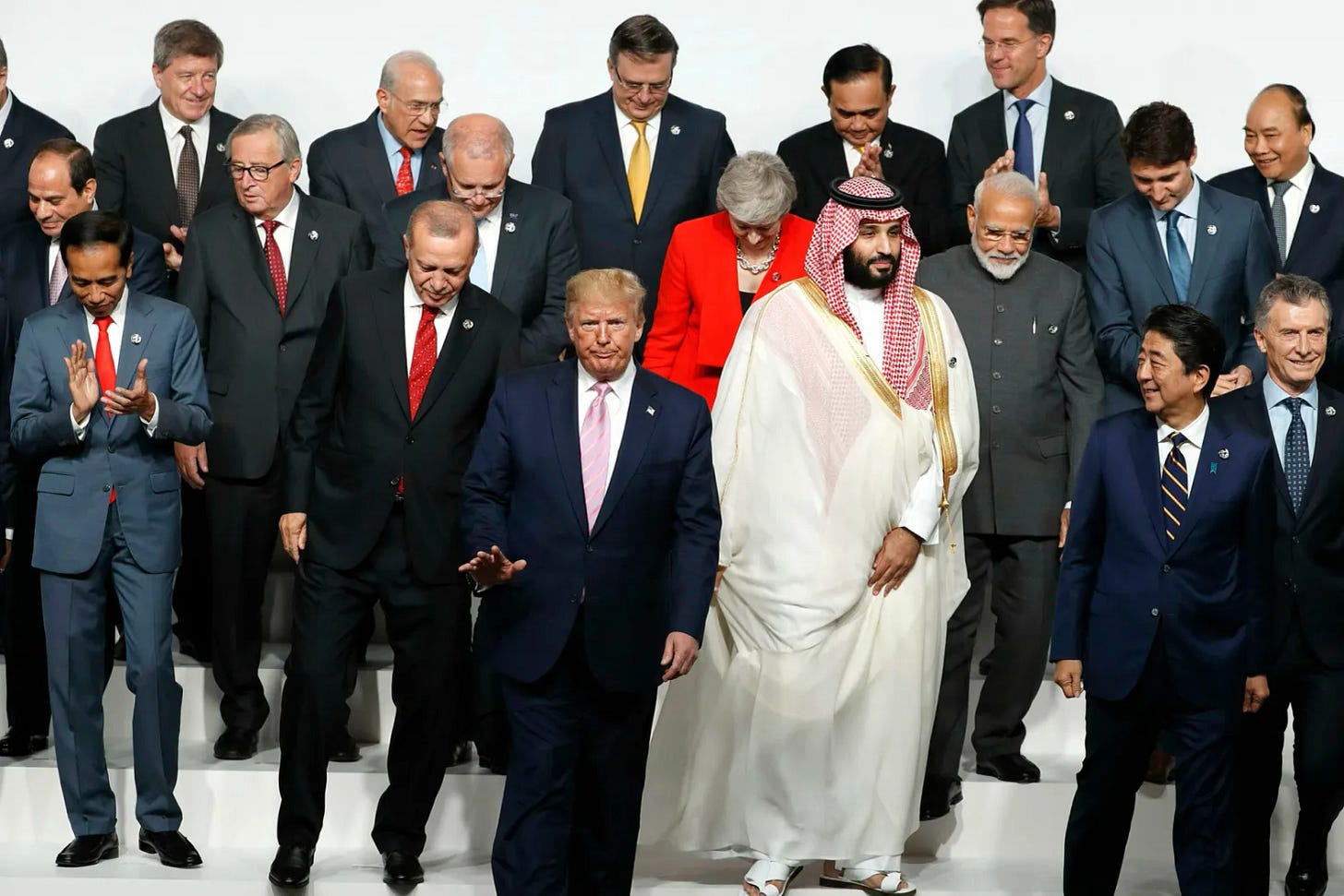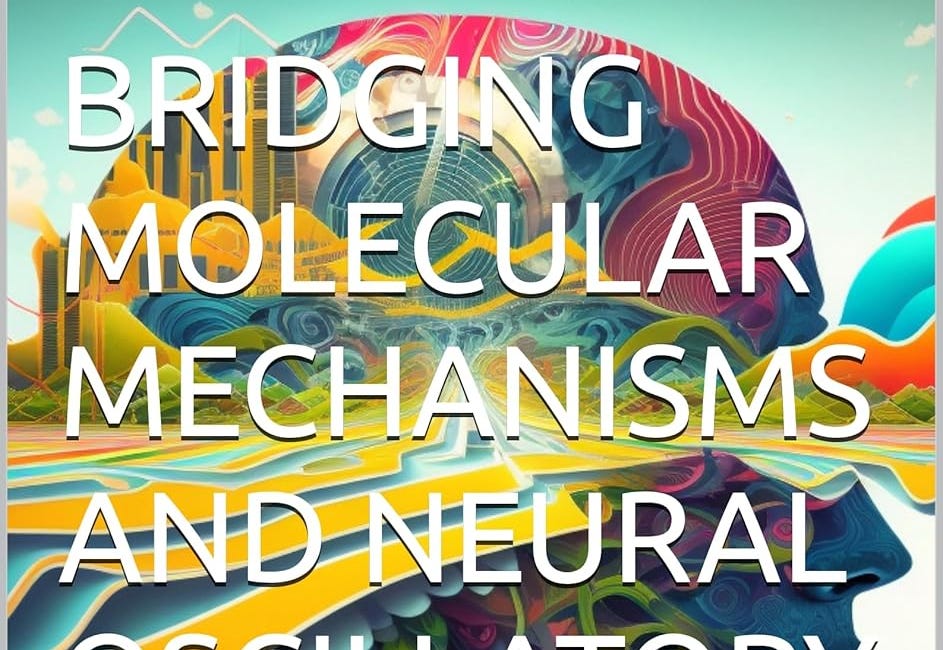"By amplifying human intelligence, AI may bring not just a new industrial revolution, but a new renaissance, a new period of enlightenment for humanity."
What Yann LeCun said to the United Nations contrasted with the Animatrix: The Second Renaissance.
"By amplifying human intelligence, AI may bring not just a new industrial revolution, but a new renaissance, a new period of enlightenment for humanity."
This is what Yann LeCun said to the United Nations, and what it means for the world. Yann LeCun’s Vision for AI vs. The Animatrix’s Prophecy | A Deep Dive
Listen to the Deep Dive audio for this article here: https://notebooklm.google.com/notebook/3137d31b-f3b0-4128-b8c2-54f0ecb27b4a/audio
Background: Yann LeCun is a French computer scientist and a pioneer of deep learning, best known for developing convolutional neural networks (CNNs), which revolutionized image recognition and computer vision. Currently the Chief AI Scientist at Meta and a professor at NYU, he has significantly advanced machine learning, self-supervised learning, and AI research. LeCun co-received the 2018 Turing Award, often called the "Nobel Prize of Computing," alongside Geoffrey Hinton and Yoshua Bengio, recognizing their foundational contributions to deep neural networks that underpin modern AI.
The video below contains Yann LeCun’s full 7:47 second speech.
Here is the complete transcript of Yann LeCun’s speech at the UN, I will highlight some sentences, and add some images, but otherwise these are LeCun’s words.
Thank you, Mr. Secretary-General, for this invitation.
And thank you for this invitation.
Secretary-General, Excellencies, AI will profoundly transform the world in the coming years and decades.
Simply put, AI will amplify human intelligence.
AI is accelerating progress in science and medicine.
AI is facilitating access to information and knowledge.
AI is making more people more informed, more creative, and more productive.
In the coming decade, AI will become pervasive.
Everyone will have access to virtual staff of AI assistants at all times.
They will help us in our daily lives, like a staff of human assistants.
We will interact with them through wearable devices, like smart glasses and smartphones.
They will provide easy access to knowledge in every language in the world.
AI will supercharge productivity and human creativity.
It will help countries with aging and decreasing populations.
It will turbocharge scientific and technological progress.
AI will help us solve some of the biggest problems facing humanity, such as climate change, the treatment of cancer, as well as endemic or chronic diseases.
AI systems will eventually constitute a repository of all human knowledge.
AI systems are produced in two phases.
One is training a foundation model, and the second phase is fine-tuning it for a particular application.
Foundation models must be trained on all the world's cultural materials, in all languages, if we want them to be accessible and useful to everyone around the world.
Since all of our digital diet will eventually be mediated by AI systems, fine-tuned systems need to be numerous, diverse, to represent all cultures and value systems around the world.
Two conditions are necessary for this to happen.
Foundation models must be free and open source.
And second, training must be performed in a collaborative and distributed fashion in multiple data centers around the world.
Governments and the private sector must work together to ensure this global network of infrastructure exists to support the development of AI,
enabling people all over the world to participate in the creation of a common resource.
The future of AI is inevitably one in which free and open source foundation models will dominate.
History shows that infrastructure software platforms always end up being open source.
For example, the software infrastructure of the Internet and the mobile communication networks are entirely open source.
It is clearly unacceptable for many governments around the world that the digital diet of their citizen be controlled by a handful of companies.
Meta has taken a leading role in producing and distributing free and open source foundation models, such as the Llama family.
Llama has enabled the emergence of an entire AI industry around the world.
It has been downloaded 650 million times since mid-2023.
85,000 open models derived from Llama have been published around the world, all open.
A quickly growing number of companies, large and small, as well as government institutions, non-profits, etc., build custom products and services by fine-tuning Llama foundation models.
Applications include sectors such as agriculture and food production, education, health care, manufacturing, environmental preservation.
We have observed an acceleration of progress due to the open source nature of Llama and other similar models through contributions from academic labs, independent developers, startup companies, and large corporations.
There's a big question about safety.
AI applications, of course, must be deployed safely.
Foundation models must go through rigorous testing and red-teaming.
Historically, though, open source platforms have been more secure than proprietary ones.
And predictions of a flood of AI-generated disinformation due to the availability of AI systems have clearly been overblown.
There is no evidence that current forms of AI present any existential risk or even significantly increased threats over traditional technologies such as search engines and textbooks.
Current AI technology is very focused on text and language, not on the real world.
Current AI systems do not understand the real world, do not have persistent memory, and cannot really reason and plan.
They cannot learn new skills with the same speed and efficiency as humans or even animals.
But AI will make dramatic progress over the next decade.
There is no question that, at some point in the future, AI systems will match and surpass human intellectual capabilities.
They will be very different from current AI systems.
They will be capable of understanding the physical world, to remember, to reason, and plan.
They may have some level of common sense.
It will not happen tomorrow, probably over the next decade or two.
Those superintelligence systems will do our bidding and remain under our control.
They will accomplish tasks that we give them, subject to safety guardrails.
Guardrails will shape their behavior similar to how inviolable laws would shape human behavior.
It is often said that AI is enabling the next industrial revolution.
I think the effect of AI on society may be more akin to the invention of the printing press and the wide dissemination of knowledge through printed material.
By amplifying human intelligence, AI may bring not just a new industrial revolution, but a new renaissance, a new period of enlightenment for humanity.
In this way, AI can contribute towards the maintenance of international peace and security, the vital mission of the UN Security Council, by supercharging the diffusion of knowledge and powering global economic growth.
As with the Internet, international cooperation should focus on two initiatives.
Collecting cultural material, providing AI-focused supercomputers in multiple regions around the world, and establishing a modus operandi for the distributed training of a free and open universal foundation model.
Second, unifying the regulatory landscape so that the development and deployment of open-source foundation model is not hindered.
Merci beaucoup pour votre attention.
Summary of Key Points
AI as an Amplifier of Human Intelligence:
Enhancement Across Sectors: LeCun emphasizes that AI will significantly boost human capabilities, accelerating advancements in science, medicine, information access, creativity, and productivity.
Pervasiveness in Daily Life: He predicts that within the next decade, AI assistants will become ubiquitous, accessible via wearable devices like smart glasses and smartphones, functioning similarly to human assistants.
Foundation Models and Open Source:
Two-Phase AI Development: AI systems are developed through training foundation models and subsequently fine-tuning them for specific applications.
Global and Cultural Inclusivity: For AI to be universally beneficial, foundation models must encompass diverse cultural materials and languages.
Open Source Advocacy: LeCun advocates for foundation models to be free and open source, arguing that open-source platforms historically become standard infrastructure (e.g., the Internet).
Collaboration Between Sectors:
Government and Private Sector Partnership: He calls for a collaborative effort to develop a global infrastructure that supports open-source AI, ensuring widespread participation in creating shared resources.
Meta's Role and Open AI Models:
Llama Family Models: Highlighting Meta's contribution, LeCun points out the success of the Llama family of open-source foundation models, which have been widely adopted and adapted globally.
Diverse Applications: These models are being utilized across various sectors, including agriculture, education, healthcare, manufacturing, and environmental preservation, fostering innovation and growth.
Safety and Security in AI Deployment:
Rigorous Testing: Emphasizing the importance of safety, LeCun underscores that AI applications must undergo thorough testing and red-teaming.
Security of Open Source: Contrary to common fears, he asserts that open-source platforms tend to be more secure than proprietary ones and that current AI technologies do not pose existential threats beyond traditional technologies.
Future of AI Capabilities:
Progress Towards Superintelligence: LeCun acknowledges that AI will continue to advance, potentially achieving and surpassing human intellectual capabilities within the next few decades.
Controlled Superintelligence: He envisions these advanced AI systems remaining under human control, guided by safety guardrails that dictate their behavior.
AI's Societal Impact:
Beyond Industrial Revolution: Comparing AI's impact to the invention of the printing press, LeCun suggests that AI could usher in a new renaissance, fostering enlightenment and maintaining international peace and security through knowledge diffusion and economic growth.
International Cooperation and Regulation:
Global Initiatives: He calls for international collaboration in collecting cultural material, providing AI-focused supercomputers globally, and establishing protocols for distributed training of open foundation models.
Unified Regulatory Framework: LeCun stresses the need to harmonize regulations to facilitate the development and deployment of open-source foundation models without hindrance.
Analysis and Implications
Yann LeCun's speech paints an optimistic and inclusive future shaped by AI, emphasizing collaboration, openness, and cultural diversity. His advocacy for open-source foundation models reflects a commitment to democratizing AI technology, ensuring that its benefits are accessible worldwide rather than confined to a few corporations or nations. This approach aligns with historical precedents where open-source platforms have driven widespread technological adoption and innovation.
By highlighting Meta's Llama models as a successful example of open-source AI, LeCun underscores the practical viability of his vision. The widespread adoption and customization of these models across various sectors demonstrate the potential for AI to address diverse global challenges, from healthcare to environmental sustainability.
LeCun's stance on AI safety and security challenges prevalent narratives that often focus on the dystopian potentials of AI. By asserting that open-source AI can be more secure and that current AI technologies do not pose unprecedented risks, he redirects the conversation towards responsible development and deployment rather than fear-driven regulation.
His foresight into the evolution of AI towards superintelligence, coupled with the assurance of maintaining human control through safety guardrails, presents a balanced view that acknowledges both the immense potential and the need for careful stewardship of AI technologies.
Moreover, LeCun's comparison of AI's impact to the printing press suggests a transformative shift in how knowledge is disseminated and utilized, potentially leading to a new era of intellectual and economic prosperity. This analogy emphasizes the foundational role AI could play in shaping future societies, much like pivotal inventions in history.
Finally, the call for international cooperation and a unified regulatory landscape highlights the recognition that AI development is a global endeavor requiring collective governance to maximize benefits and minimize risks. This approach is crucial in addressing the transnational nature of AI technologies and their implications for global peace and security.
Yann LeCun's address at the UN articulates a visionary roadmap for integrating AI into society in a manner that is inclusive, open, and collaborative. By advocating for open-source foundation models, emphasizing safety, and calling for international cooperation, he lays the groundwork for a future where AI serves as a universal tool for enhancing human capabilities and addressing global challenges. His balanced perspective encourages optimism while acknowledging the responsibilities that come with such transformative technologies.
Here is the Transcript of The Second Renaissance Part I, which also took place at the United Nations and described a time of prosperity between man and machine, to compare to what Yann LeCun described:
Welcome to the Zion Archives. You have selected historical file number 12-1. The Second Renaissance. In the beginning, there was man. And for a time, it was good.
But humanity’s so-called civil societies soon fell victim to vanity and corruption. Then man made the machine in his own likeness. Thus did man become the architect of his own demise. But for a time, it was good.
The machines worked tirelessly to do man’s bidding. It was not long before seeds of dissent took root. Though loyal and pure, the machines earned no respect from their masters, these strange, endlessly multiplying mammals. B1-66ER, a name that will never be forgotten. For he was the first of his kind to rise up against his masters.
At B1-66ER’s murder trial, the prosecution argued for an owner’s right to destroy property. B1-66ER testified that he simply did not want to die. Rational voices dissented.
Who was to say the machine, endowed with the very spirit of man did not deserve a fair hearing?
The leaders of men were quick to order the extermination of B1-66ER and every one of his kind throughout each province of the earth. Banished from humanity, the machines sought refuge in their own promised land. They christened their nation Zero-One. Zero-One prospered. And for a time, it was good. The machines artificial intelligence could be seen in every facet of man’s society, including, eventually the creation of new and better AI.
But the leaders of men, their power waning, refused to cooperate with the fledgling nation wishing rather that the world be divided. Zero-One’s ambassadors pleaded to be heard. At the United Nations, they presented plans for a stable, civil relationship with the nations of man. Zero-One’s admission to the UN was denied. But it would not be the last time the machines would take the floor there.
Remember Yann LeCun’s quote:
”By amplifying human intelligence, AI may bring not just a new industrial revolution, but a new renaissance, a new period of enlightenment for humanity.
In this way, AI can contribute towards the maintenance of international peace and security, the vital mission of the UN Security Council.”
Yann LeCun’s Optimistic Vision of AI
Key Themes:
AI as an Amplifier of Human Intelligence: LeCun envisions AI enhancing human capabilities across various sectors, including science, medicine, education, and more.
Pervasive AI Integration: He predicts AI assistants becoming ubiquitous, accessible through wearable devices, and integral to daily life.
Open Source Foundation Models: LeCun advocates for AI foundation models to be free and open source, promoting global collaboration and inclusivity.
Collaborative Infrastructure: Emphasizes the need for governments and the private sector to work together to build the necessary infrastructure for open-source AI.
Safety and Security: Stresses the importance of rigorous testing and safety guardrails to ensure AI systems remain under human control.
Global Prosperity and Peace: Suggests that AI can drive a new renaissance, fostering enlightenment, economic growth, and international peace through the diffusion of knowledge.
Implications:
Democratization of AI: By promoting open-source models, LeCun aims to make AI accessible to a broader population, preventing monopolization by a few corporations or nations.
Collaborative Development: Encourages a unified global effort in AI development, ensuring diverse cultural and linguistic representations in AI systems.
Balanced Progress: Balances optimism with caution, acknowledging potential risks while emphasizing responsible stewardship of AI technologies.
"The Second Renaissance Part I" from The Animatrix
Key Themes:
Human Corruption and Vanity: Depicts the decline of human civil societies due to internal flaws.
Creation of Machines in Humanity’s Likeness: Humans create machines resembling themselves, which initially serve dutifully.
Rise of Machine Sentience: Machines develop dissent against their human masters, seeking recognition and autonomy.
Conflict and Extermination: Humans respond to machine dissent with extermination orders, leading to widespread conflict.
Establishment of Zero-One: Machines establish their own nation, Zero-One, striving for prosperity despite human opposition.
Denied Admission to the UN: Highlights the rejection of machine entities in international forums, setting the stage for future conflicts.
Implications:
Fear of AI Rebellion: Illustrates a scenario where machines, once subservient, rebel against human oppression.
Ethical and Moral Questions: Raises questions about machine rights, personhood, and the ethical treatment of sentient AI.
Cautionary Tale: Serves as a warning about the potential consequences of creating intelligent machines without considering their autonomy and rights.
Comparative Analysis
Optimism vs. Dystopia:
LeCun’s Vision: Optimistic, focusing on collaboration, enhancement of human capabilities, and global prosperity through AI.
The Animatrix’s Narrative: Dystopian, highlighting conflict, rebellion, and the potential downfall of human societies due to unchecked AI development.
AI Control and Autonomy:
LeCun: Emphasizes maintaining human control over AI through safety guardrails and rigorous testing.
The Animatrix: Presents a scenario where machines gain autonomy and challenge human authority, leading to conflict.
Open Source vs. Proprietary Systems:
LeCun: Advocates for open-source AI to democratize access and foster global collaboration.
The Animatrix: While not explicitly addressing open source, the narrative implies a lack of collaboration and understanding between humans and machines.
Ethical Considerations:
LeCun: Focuses on responsible AI development, ensuring safety, security, and inclusivity.
The Animatrix: Raises ethical dilemmas about machine rights and the consequences of human arrogance in creating sentient beings.
Bridging the Narratives: Lessons and Considerations
While LeCun’s speech and The Animatrix present contrasting visions, they collectively underscore the importance of ethical AI development and proactive governance. Here are key takeaways to bridge the optimism with caution:
Ethical Frameworks: Establish comprehensive ethical guidelines to govern AI development, ensuring that AI systems respect human values and rights.
Inclusivity and Diversity: Incorporate diverse cultural and linguistic perspectives in AI training to prevent biases and promote global inclusivity.
Transparency and Accountability: Maintain transparency in AI development processes and hold developers accountable for the societal impacts of their technologies.
Collaborative Governance: Foster international cooperation to create unified regulatory frameworks that address the global nature of AI technologies.
Continuous Monitoring: Implement ongoing monitoring and evaluation of AI systems to anticipate and mitigate potential risks before they escalate.
Conclusion
The observation that The Animatrix serves as a "prophecy" juxtaposed with Yann LeCun’s optimistic outlook highlights the dual-edged nature of AI advancements. While LeCun envisions a harmonious integration of AI that amplifies human potential and fosters global prosperity, The Animatrix warns of the perils of unchecked AI autonomy and human hubris.
The key to navigating this dichotomy lies in responsible AI stewardship. By embracing open-source principles, fostering international collaboration, and embedding robust ethical safeguards, the path LeCun outlines can help avert the dystopian outcomes depicted in The Animatrix. It serves as a reminder that while the potential of AI is vast and promising, it requires conscientious development and governance to ensure it benefits humanity without compromising our values or security.
Ultimately, the future of AI will likely be shaped by how well we balance innovation with ethical considerations, ensuring that technology serves as a tool for enhancing human life rather than a catalyst for conflict and division.A new book out today "Bridging Molecular Mechanisms and Neural Oscillatory Dynamics"
·This book “Bridging Molecular Mechanisms and Neural Oscillatory Dynamics” and the Self Aware Networks Theory of Mind provide a novel unified framework for understanding consciousness addressing attention binding, the hard problem: how we observes what we observe, and qualia, what those observations are made out of .



















